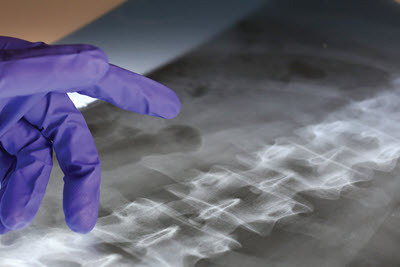Know When View Types are Necessary for X-ray Code Selection
Do providers need to specify which views they captured? Find out. Radiologists capture X-ray images of the patient’s body in different ways and positions during an exam, and the terms for the view types can get confusing. As a radiology coder, a firm knowledge of the different views is helpful when counting the number of views toward selecting the correct CPT® code. Use this refresher to boost your X-ray documentation understanding. Tally the Types of Views for Accurate Coding “Some reports are out there saying, you need to have the specific views in your documentation, like anteroposterior (AP), lateral, merchant, oblique, and if you don’t, then we’re not going to bill for those views,” said Nate Felt, MS, ATC, PTA, CPC, senior consultant for orthopedic, sports medicine, and radiology physicians coding at Intermountain Health during AAPC’s HEALTHCON 2023 “Diving Into Diagnostic Radiology” session. Felt continued to explain that the X-ray codes in the CPT® code set specify that the number of views is what counts when seeking reimbursement. For example, each of the following codes indicate how many views are required for reporting: “Over the years, CPT® has gone from requiring specific views to saying, ‘I just want one to two views,’ ‘I want two to three views,’ or ‘I want three or more views,’” Felt added. Scenario 1: A patient presents to your radiology practice for a three-view chest X-ray. The radiologist captures AP, lateral, and posteroanterior (PA) views of the patient’s chest, interprets the results, and writes their report. Scenario 2: A patient presents to your radiology practice for a three-view chest X-ray. The radiologist captures images and documents that they captured three views of the patient’s chest. The provider then interprets the results and writes their report. In both scenarios, the radiologist captured three X-ray views of the patient’s chest. The difference is that in Scenario 1, the provider specified which views were captured whereas the radiologist simply documented that they captured three views in Scenario 2. Does the documentation method matter when it comes to counting the views? “I tell my physicians, if you say the types of views, you’re going to be okay because our coders are smart enough to realize if you document AP, lateral, and oblique, the coder can say, ‘those are three views,’” Felt added. However, by including the specific types of views in the documentation, the provider is also listing the number of views. This is what Felt refers to as the “gold standard” of documenting types of views. When the provider documents the types of views, they are protected if the procedure code requires a specific view, and the provider is also documenting the number of views, so you can accurately assign the correct CPT® code. Recorded images: Providers are required to permanently record images and place them in the patient record. You can review the recorded images to see what views the radiologist captured, which can verify the quantity of views listed in the medical record. Understand the Common X-ray Views Radiologists use different X-ray views when imaging the patient’s body. The distinct views allow the provider to rule out or diagnose the patient’s condition with the best view possible. Below is a refresher of some of the common X-ray views: These definitions will help you identify the view types when counting the number of views to assign the correct imaging procedure code. Know Which Codes Require Specific Views While the X-ray procedure codes specify the number of views required to report the codes, the CPT® code set also includes codes whose descriptors do require specific views for reimbursement. For example, the following lumbosacral X-ray procedures require bending views of the spine: Scenario: A patient presents to your radiology practice with lower back pain. The radiologist captures AP, PA, lateral, oblique, flexion, and extension views. For this scenario, you’ll assign 72114 to report the X-ray procedure. The provider captured six views, including the bending views, which are documented by “flexion” and “extension” views. “Doctors are using anatomical terms. They’ll say, ‘in flexion’ or ‘in extension’ — those are bending views,” Felt noted. However, if the radiologist captured AP, PA, lateral, and oblique views, then you’d assign 72110 (… minimum of 4 views) since the provider didn’t capture the bending views. Bottom line: Even though the CPT® code descriptors specify the number of views, you need to stay on your toes and carefully review all medical documentation to make sure you have the information needed for the correct code selection.





